#what is this art from prehistoric times?
Text

This is the oldest draft I had in my draft folder :')
Mikenana and Erumike brotp excuse me while I go happily cry in a corner. Good times, very good times when I had the time to be drawing all this stuff
Why did I not post this sooner? No idea
Anyway have a healthy vets triangle here
#my art stuff#shingeki no kyojin#snk vets#snk veterans#erwin smith#mike zacharias#miche zacharius#nanaba#erumike#mikenana#erumikenana#brotp#otp#best bromance ever guys#i would ship them#if it wasn't for Nanaba#also I found this in my old folder of drawings#sitting there#patiently waiting for me to acknowledge I had it prepared but never posted it#what is this art from prehistoric times?#anyway here it is
59 notes
·
View notes
Text

JASPER MY BOI!!
#i finally digitalized this!!#omg I love how this turned out :]#the sketch was from last April but I somehow never did anything with it#i actually plan to work on some more of the sketches from that sketchbook#pitskederdoenerhaendler#pitske’s art#this dude ‚Jasper ‚ is one of the two protagonists from my story Galacticall#the Story is about Rudolph ‚a retired postman ‚ who reluctantly had to leave the earth due to it becoming unbearable for humans to live on#and having to leave his deceased wife’s grave behind#as time passes on the spacecraft his loneliness only grows so as he feels himself getting older he decides to deliver one last letter#a love letter to his wife#so he steals a small spaceship and crashlands on earth#which has ‚as he soon discovers‚ changed drastically in about 80 years which for them were a mere 8 (plus/ minus the sped up evolution)#he now tries his best to navigate the new environments and geography avoiding carnivorous giant bugs like prehistoric insects#along the way to find his hometown and wife‘s grave he meets Jasper (not his real name but it is what Rudy calls him#due to the language barrier)#there‘s more to it and I honestly suck at summaries but expect some art of Rudy soon enough#original character#ocs#oc art#digital art#mllte#my love letter to earth
9 notes
·
View notes
Note
Pickle and Baki men reacting to pickle and his prehistoric feral daughter reader.
I like that we’ve done a proper dissection of Pickle’s potential family tree. From mate, to sister, and now daughter. Somewhere in the ancient mountains they’ll probably find a gigantic fossilized block and it’ll turn out to be Pickle’s mom of ridiculous size (like Sidon next to King Dorephan from BotW). Jokes aside, the Internet seems to agree that Pickle is in his 20s from the young facial features and general life expectancy, so his daughter would be rather young.
Baki Headcanons: Pickle’s Daughter! Reader
Featuring Pickle’s challengers and his daughter that seems to take after him in personality.
The news of a prehistoric human were too great to not make their way to all media outlets, though the scientists had managed to conceal your existence for the sake of privacy. They didn’t want a poor, confused child to be surrounded by microphones and cameras the second you landed. What the research team didn’t anticipate was that a bunch of dangerous men would sneak into Pickle’s provisional enclosure in order to measure up his strength. When Doppo broke out of the fake T.Rex and spotted the scattered toys on the floor, he could feel the bile kicking at the back of his throat. “Stop! There’s a child in here!” His voice boomed across the room and the fighters froze. Yuujirou glanced at him, incredulous, and was about to question his sanity when a small figure emerged from the carved tree trunk.
As a loving father himself, Doppo was ashamed to have potentially endangered this innocent soul. He demanded that the men exit the premises at once, and most complied without much protest. The Ogre, however, didn’t like the idea of leaving empty handed. He doesn’t care about his own damn children, why should he concern himself with an unrelated brat? He proceeded to break the security glass, ignoring the pleas of common decency. At that point Pickle was standing next to you, completely unbothered by the scene unraveling before him. He looked at you with an encouraging smile, and with the approval of your father confirmed, you didn’t waste any more time. You rushed towards the intruder and took a swing at him.
The remaining men prepared their stances, ready to shield you from Yuujirou’s anger. He observed your reaction after hitting him. His muscles were hard and the recoil shot through your entire arm. How exciting. You were gleaming with youthful enthusiasm. Yuujirou couldn’t help but laugh at the sight. Now that was a child made for battle. He lowered his large hand and ruffled your hair vigorously. You didn’t entirely understand the gesture, but you grinned at the stranger, flashing your chiseled fangs.
At least one worry has been cleared: fights leave you unfazed. They won’t have to hold back when challenging Pickle. Retsu is somewhat worried at the idea of a child whose main form of entertainment is violence. Katsumi shares a similar train of thought, although he’s quick to be charmed by your cheers and curiosity towards his martial arts. Baki finds you cute and captivating. Both him and Jack like to joke that you’re the child Yuujirou would’ve wanted. You abruptly showed up one day and potentially cleared them of the Hanma inheritance. Not that such matters interest you. You might be a fighting prodigy in the eyes of these men, but you prefer your role as Pickle’s dauntless daughter.
357 notes
·
View notes
Text
On the subject of Dinosaur Documentaries...
So Life On Our Planet dropped a few days ago, another installment of this seeming boom of these kind of shows since Prehistoric Planet last year, and it got me thinking about this whole little niche genre.
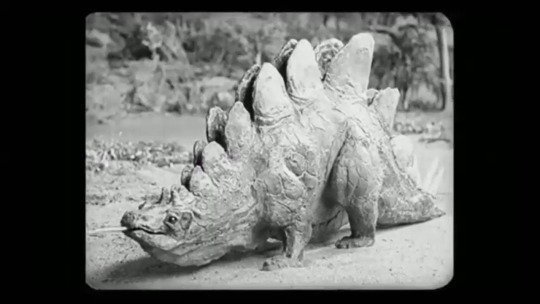
The very first "Paleodoc" was released in 1922, made by the Carnegie Museum of Natural History to educate museum goers on how the fossils they saw were collected and prepared. This began the format I like to call the "Talking Heads" Paleodoc which is mainly in the form of interviews or narration over actual footage of Paleontologists at work with the occasional "Live" Dinosaur for visual aid. These are by far the most common form of dinosaur documentary you'll find, even today, mainly because they're cheap to produce and fit in the general style of most science documentaries.
For many decades throughout the 20th century, Paleodocs were pretty rare. They would pop up time to time, and with the sudden influx of attention they got after Jurassic Park, we got some really good ones. Yet they were all the same Talking Head types. What really changed the game was the good ol Magnum Opus of the field: Walking With Dinosaurs.
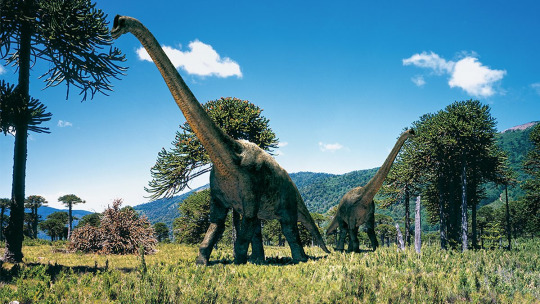
WWD pioneered the second type of Paleodoc I believe to exist, which are the "In Their World" Paleodocs. These are different in the fact they focus almost entirely on the live visual aids, with the human presence being limited to narration or brief pauses for context. They're meant to simulate the modern nature documentary, like Planet Earth, that focus more on showcasing animal behavior with state of the art filming techniques than being a source of in-depth science.
The success of WWD cannot be overstated, and I have to say I do find the In Their World format a lot more engaging and easier to connect with. They portray the wonder of prehistory spectacularly, letting audiences get emotionally connected in the animal characters the story creates, even if this has lead to criticisms of anthropomorphism. These programs also almost always use real footage of modern day earth for their prehistoric creatures to roam on, which I'm sure is very sad for the people who want to see their favorite dead plants on screen.
The Walking With... series would expand into sequels and spin-offs and Nigel Marven, and other companies like Discovery would jump on the bandwagon and release their own takes on the concept, but by the mid 2010s the format had basically died out. We'd get one or In Their World style doc every few years until we just didn't get anything. Outside of the occasional TV special that reused When Dinosaurs Roamed America footage, it was empty.
It took until Disney's Live Action remake of The Lion King of all things for that pendulum to start swinging again. Seeing those expressionless CGI cats got Jon Favreau thinking about how he could use this technology and the talented people behind it to make something really cool, and we got Prehistoric Planet.
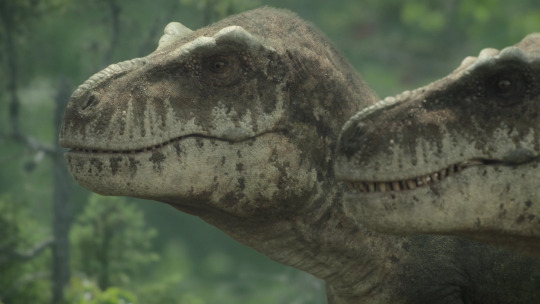
And, in a repeat of Walking With Dinosaurs, we're seeing more of these In Their World type shows. The original guys behind WWD are even making a comeback with their own series, Surviving Earth. Plus even more little hints and rumors of massive incoming projects from overexcited paleontologists trying not to break their embargo.
It looks like the 2020s will be another resurgence in these types of spectacle Paleodocs, and while a good ol Talking Head will always be there, I can't help but get excited for these animated spectacles and all the weird and wonderful ways they flash those visual aids across our TV screens.
161 notes
·
View notes
Text
Kaiju Week in Review (March 24-30, 2024)


A coworker asked tonight me how Godzilla x Kong: The New Empire measured up to Godzilla Minus One, and I responded, "Almost as good, but in a completely different way." If you like monsters (and if you're following me I have to assume you do), see it, no questions asked. There's about a million of them and they're all delightful. The franchise has long struggled to recapture the specific charms of the Showa era, and I think this comes closer than any of them. (It's the climactic tag-team battle... also Mothra returning to knock some sense into Godzilla). Pure junk food, but you can't just watch Oppenheimer all the time.

Godzilla x Kong tore up the box office this weekend, performing well above expectations. Its $80 million opening Stateside was the second-best of the Monsterverse (after Godzilla). It added another $114 million internationally for the best overall opening of the (still-young) year. China was a big part of that with $44 million; giant monster movies are among the few Hollywood imports that still play well there. With a $135 million budget, lowest of the Monsterverse by a wide margin, it's a matter of when, not if, Legendary announces the next one.

The Oxford English Dictionary has added an entry for tokusatsu, defined as "A genre of Japanese film or television entertainment characterized by the use of practical special effects, usually featuring giant monsters, transforming robots, and masked and costumed superheroes." It's part of a group of 23 freshly-acknowledged Japanese loan words; unclear if the timing is coincidental. Oh, and if you're curious, they added kaiju in 2018. As someone who remembers when the only English-speakers who used either word were in fandom, it's pretty wild to see.
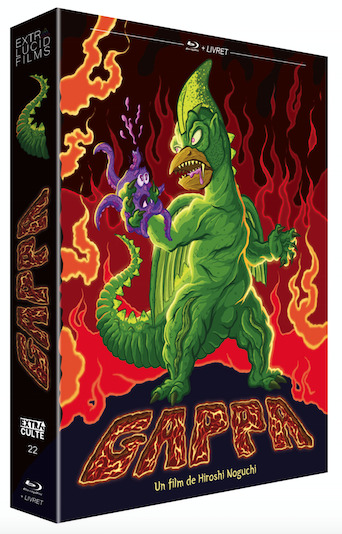
French company Extralucid Films will release Gappa on Blu-ray in June. The impressive-sounding bonus features are naturally all in French, but there's one that transcends language: 17 minutes of extra monster footage. The U.S. version of Gappa, Monster from a Prehistoric Planet, only has about 7 minutes worth of shots absent from the Japanese version, so I'm pretty curious about the other 10. It's also the first time this footage has been released in HD (Tokyo Shock blew it in 2020).

Season 2 of Chibi Godzilla Raids Again is indeed receiving official English subtitles, starting the same day as the Japanese premiere, April 10. Godzilla Battle Line also added a hilariously busted joint Chibi Godzilla-Chibi Mechagodzilla unit, along with a Destoroyah variant. (Maybe Godzilla x Kong units are next month?)
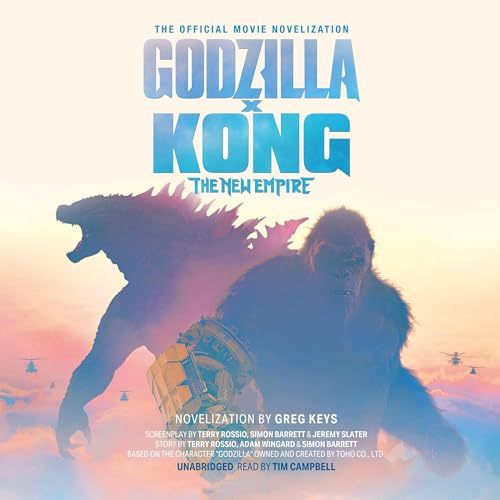
A new Monsterverse movie means new books to buy. The prequel comic Godzilla x Kong: The Hunted is out already (not recommended), but officially you'll have to wait until April 23 for the novelization and May 14 for the art book. Chalk that up to the late release date change, maybe. Unofficially, people are already getting the novelization from Amazon, because they're a monopoly that can afford to pay the fines from publishers for breaking street date. The audiobook version also released on the same day as the film. I don't have intel on what it adds and changes yet; adding everything from the film itself to Wikizilla is all I can handle right now.

The San Francisco Giants are offering a Godzilla VIP Experience on May 17, a long-overdue acknowledgement of the savior of their city. Tickets are almost gone, though I think it's a shame that the promotion is opt-in to begin; what happened to giving these tchotchkes out to the first thousand fans? Well, figures that they'd make getting merch of the Minus One Godzilla in the States a hassle.
#kaiju week in review#godzilla#godzilla x kong the new empire#baseball#chibi godzilla raids again#king kong#gappa#kaiju#tokusatsu
57 notes
·
View notes
Note
hi so i’ve been following you for a little (mostly because of dinosaurs and mechanisms) but i’ve been curious about this and don’t really know where else to ask, how do you find dinosaur references? i’ve been wanting to start drawing some dinos again but really have no idea where to go for references or inspiration.
my go-to's are skeletal references and 3d models!
for skeletals, the gold standard is scott hartman's. he's done sooo many and they're all very good- you can find them on his website here. https://www.skeletaldrawing.com/

i do think his life reconstructions tend to be on the shrinkwrapped side, but his skeletals are great.
for skeletals, gregory s. paul is another great resource. if you can find a physical or digital copy of the princeton field guide to dinosaurs, it has skeletal references for a LOOOOT of dinos.
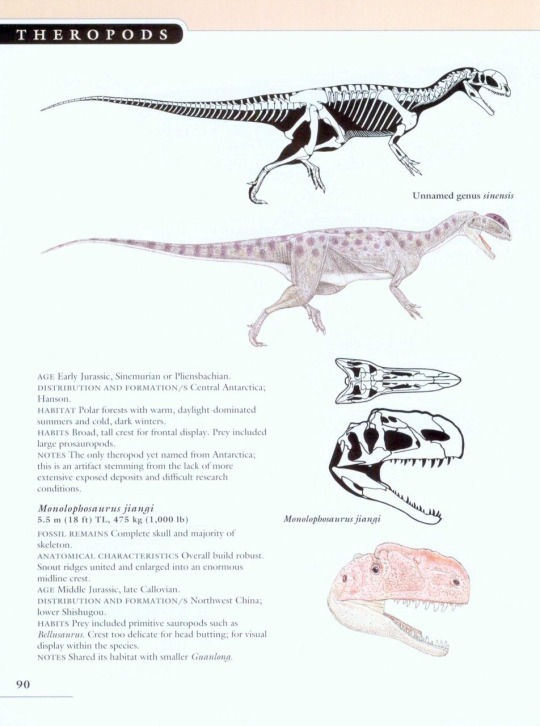
greg paul's life reconstructions should also be taken with a grain of salt- shrinkwrapping and pronated hands abound. his taxonomy is also notably controversial (he's the lead author on that tyrannosaurus regina/rex/imperator paper from a while back..), so double-check the genus/species names you're referencing.
(he also has the princeton field guides to marine reptiles and pterosaurs, but i haven't read those so i can't comment. haven't heard great things about the pterosaurs one, though- if you want pterosaur references, go for pteros.com, pterosaur.net, and mark witton's "pterosaurs" book)
now for 3d models- skeletals are all well and good, but if you're not drawing a dinosaur from the side their usefulness can be limited. sketchfab is my go-to to find 3d reference. i look for skeletons/skulls from museums that have been digitized, mostly-

but i'll also look for full reconstructions, just reference them in the same way you'd reference any other art piece (with care).
i also sometimes use the video games saurian and prehistoric kingdom? they both allow you to spin around the models of their animals, and their reconstructions are both super good.
lastly is to reference the work of other palaeoartists! this especially fits in for the inspiration part.
here's a few awesome palaeoartists around the internet (tyhank you to billymayslesbian for helping me put these together!)
mark witton

fred wierum (aka fredthedinosaurman)
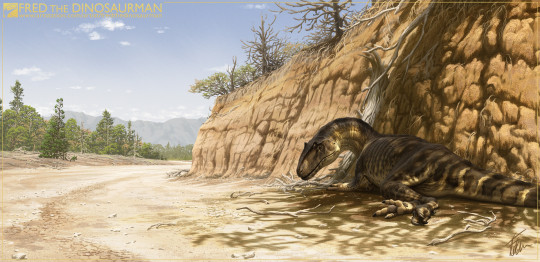
john conway

alphynix (here on tumblr under the same name)
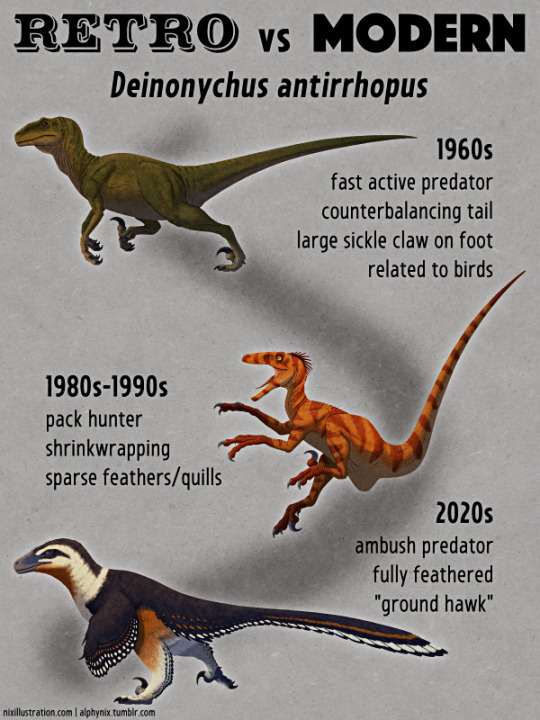
julio lacerda (this hatzegopteryx image is one of my favorite palaeoarts ever tbh)

joschua knüppe (here on tumblr at knuppitalism-with-ue, i'm especially a fan of his work recreating classical paintings with extinct primates)

and for more cartoony/styilized work:
miquel camiodraws
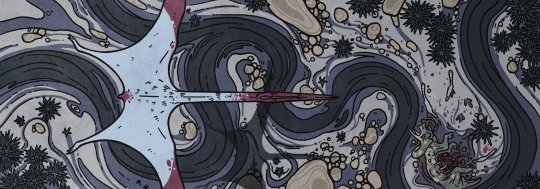
johan egerkrans

abby howard (here on tumblr at abby-howard)

natalia jagielska

greer stothers (here on tumblr at pangur-and-grim)
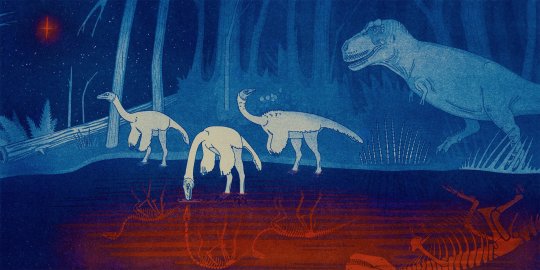
nev (saint-nevermore here on tumblr, this picture is one of my favorite palaeoarts of all time)

for some more books, check out all yesterdays by darren naish and john conway, which takes a highly speculative look at reconstructions of prehistoric animals, mostly dinosaurs.
also look at mark witton's the palaeoartist's handbook, which is exactly what it sounds like and i think could be VERY helpful for what you're looking for.
61 notes
·
View notes
Text
Bestiaryposting Results: Haesorog
Welcome to this week's bestiaryposting results! This is an unusual one in that the entry is short, but we have plenty of physical details. We're also following up two obvious ones with a description I genuinely think nobody can identify unless they're familiar with the bestiary tradition itself, or the sources thereof.
If any of that was confusing to you, please consult past posts on this matter at https://maniculum.tumblr.com/bestiaryposting. You can also keep up with the current beast of the week -- and participate -- by checking out the tag "maniculum bestiaryposting". The entry that our artists are working from this week can be found here:
Anyway, art below the cut in roughly chronological order:
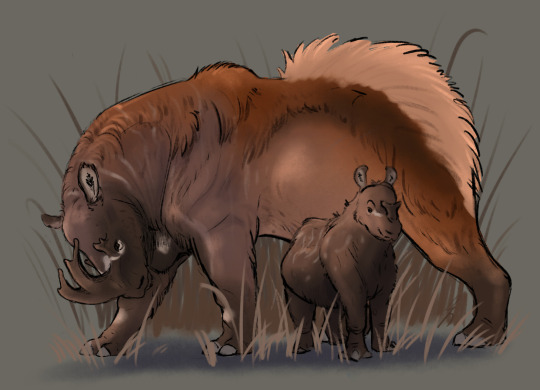
@silverhart-makes-art (link to post here) took this in a rhinoceros kind of direction, drawing something that reminds me of paleoart depicting prehistoric rhino relatives that I have seen & enjoyed. I was going to say something like "I'm not sure if that was the vibe they were going for", but the linked post cites Brontotherium as an inspiration for the horn, so that's probably what I'm picking up on. The depiction of it defending its young makes this a really interesting image, I think; I like it a lot. Also, the design decisions explained in the linked post are genuinely pretty interesting, so I encourage you to check that out.
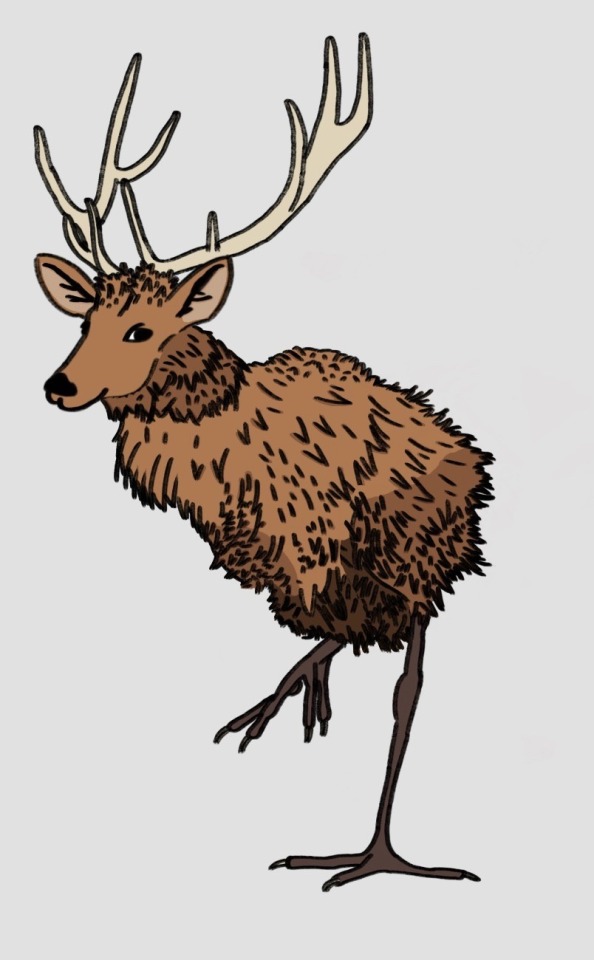
@moonygryffin (link to post here) ran with the "ibis feet, deer head" thing to produce something kind of like a flightless peryton, which I think is pretty cool. What's really clever here, I think, is how the body effectively blends elements of both animals so that it looks like a natural transition between the two. It's kind of bird-shaped, but you can see some deer-shaped elements at the top, and it's got this furry kiwi kind of vibe that's plausibly both "deer" and "bird".
Moonygryffin also suggests that the thing with the feet is the result of our favorite game, Manuscript Telephone, and it was originally the footprint of an ibex, which I think is probably correct. From some quick searching, it looks like Pliny just described this beast as having "cloven hooves". I think it's plausible that a later author changed it for purposes of parallelism -- "size of an ox, fur of a bear, head of a deer, feet of an ibex" -- and then someone else misread it and gave it bird feet. (Do ibexes/ibices* have cloven hooves? I'm going to assume they do, they're goats, right?)
*I checked the OED; both plural forms are attested, though the first is the more common. Which is probably why Tumblr is giving the second one the red underline.

@cheapsweets (link to post here) went for a similar concept as the above, but in a different medium and interpretation. Genuinely impressed by the realistic detail on the legs and head here -- CheapSweets has mentioned seeking out some reference material and art books recently, so I'm inclined to assume those are really paying off. Look at that thing. There's a lot of interesting material in the linked post, speaking to influences, research, and design decisions, which I think is definitely worth checking out. One thing I want to point out specifically because I missed it the first time I saw this drawing: take a look at the people & dog in the background at the top left. Now look at the trees next to them. One of them is a Haesorog cleverly disguising itself. Excellent.
(Also thank you for providing alt text.)
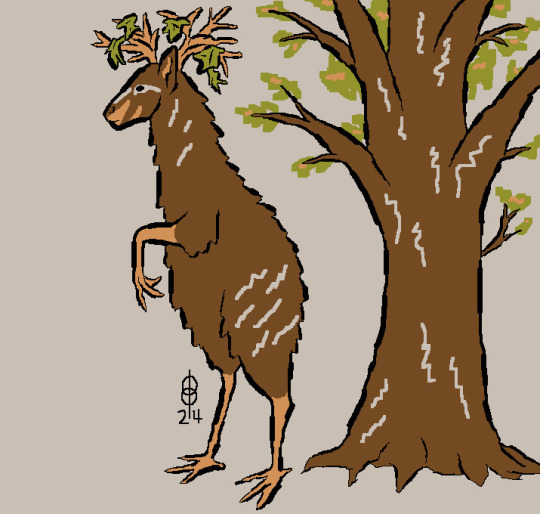
@pomrania (link to post here) has collaborated with @theforceisstronginthegirl on this one, which is a delight! Pleased to see you back, Theforceisstronginthegirl. Anyway, they've also clocked the error with the ibis thing: while they don't suggest it's an error for ibex, they do suggest that it refers to cloven hooves, which as previously mentioned is indeed what Pliny says about it. And then they also decided to give it bird feet anyway because that's more fun, which is very much in the spirit of the thing, excellent call. Anyway, the focus of this design is on the camouflage aspect. They've interpreted it as simply having stellar natural camouflage, which is why it's shown next to a tree here -- we can see that the pattern of its fur lets it blend in with the coloration of the trees around it, and that leaves tangled in its antlers along with its ability to stand on two legs enhances the effect.
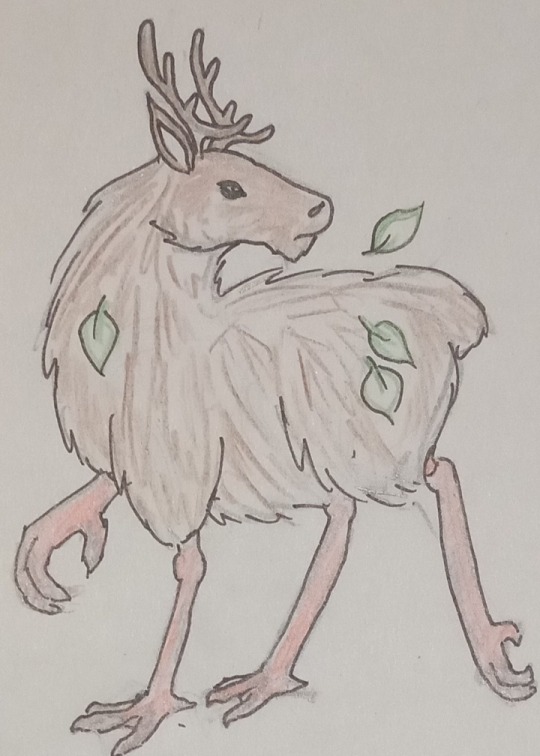
@sweetlyfez (link to post here) went with a similar quadrupedal design, shaggy deer-like thing with bird legs, but went the opposite direction with the camouflage. Her post indicates it's shown here "shedding some leaves from the last time it turned into a bush," which means this version of the Haesorog is suggested to have actively supernatural camouflage that allows it to shapeshift. (Which is definitely suggested by the text.) There's something very evocative about the eyes here, which I like. (Also, thank you for including alt text.)

@coolest-capybara (link to post here) continues to deliver beautifully stylized art. I'm really delighted by the the pose the second Haesorog is taking in order to blend in with the very pretty Stylized Plants around it -- I think this is maybe not the environment where color-shifting is hugely useful, as I have no doubt the first Haesorog is fully aware of its presence. Something that makes this particular design interesting is that between the default coloration displayed on the left and the shape of the feet, you get a kind of "this thing is a step too human for a quadruped" feeling that makes it a little more unique-looking than it might be otherwise. (Also, thanks for including alt text.)
Over all of these entries, I'm noting that one effect of the clear physical description is that it does provide a more restricted space in which artists can play -- it's much more obvious than in other weeks that all of these are the same animal. Whether that's an upside or a downside is, I think, wholly subjective. Now let's look at the Aberdeen Bestiary.
...
Okay, we can't do that actually. The page with the illustration is missing from the Aberdeen Bestiary. So we're looking over to its sister manuscript, the Bodley Bestiary. (MS. Bodl. 764, also digitized online.)
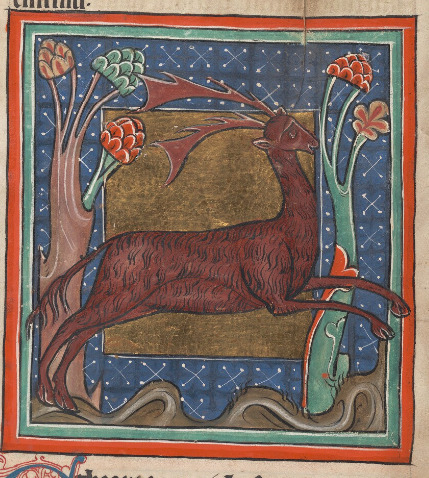
So this beast is of course the Parander.
Yep, bet everyone feels foolish for not recognizing such a common and well-known animal as the parander.
Also, of course, known as the Tarand or Tarander, of course. Or parandrus / tarandrus in Latin.
Right, so the reason that I was so confident nobody without a thorough background in the bestiary tradition (or Pliny the Elder) would recognize this one is because it's not a real animal. And it's not even one of the mythical ones that managed to get a foothold in the modern consciousness.
I might be overstating the "not a real animal" line, actually; odds are good it's based on one. Let's talk about that.
There have been some guesses as to the parander's identity in scholarship. The Bostock translation of Pliny has a footnote that cites two competing theories: "reindeer" and "elk [aka 'moose']". The reindeer one gets an explanation -- differently-colored summer and winter coats -- but the elk one is just kind of tossed out there as a proposed alternative. My guess (based on it already being past 10:30pm here and not wanting to put in the time to track down a source that's cited only by a last name with no other identifying information) is that that one's about the parander's size being emphasized.
You may say, "excuse me Maniculum, neither of those animals lives anywhere near Ethiopia. What are you playing at? Are you going to try and convince me that the pre-modern definition of 'Ethiopia' was so broad it encompassed the Arctic Circle?" The solution is that the parander wasn't originally described as being from Ethiopia -- Pliny says it's from Scythia. Which... also seems a bit too far south. But it's entirely reasonable that the Scythians were reporting on something seen on a trip north or something they heard about from northern neighbors, which would put "reindeer" and "elk/moose" both back in as options. Scythia is close enough to the range of both of those animals that it's plausible they would be familiar with them.
Someone you may have heard of took a stance on this issue, interestingly. An 18th-century biologist named...

... Linnaeus. Yep, it's codified right into the scientific name for "reindeer" now, and has been for as long as binomial nomenclature has been a thing. Anyone who wants to make the "elk/moose" argument is going to have a bit of an uphill battle.
All that out of the way, now take a moment and scroll back up to that medieval illustration. Mentally compare it to the description and the art shared in this post. There's something different, right?
You may notice that the artist has given it cloven hooves rather than bird's feet, having not been confused at all by the "footprints of an ibis" thing. Now, often this is the result of the art not actually being directly based on the text, but copied from art in a previous manuscript, so a scribe can write down the wrong word and it won't affect the art at all because the artist may or may not even be reading the text as they work.
Often, but not always. In this case, I would like to float an alternate explanation.

On the left is the translation of the Bodley Bestiary I have on my shelf, to which I referred when filling in material from missing pages in the Aberdeen Bestiary. On the right is the Bodley Bestiary digitized manuscript.
Now. I am not trained in Latin paleography, so it's possible that I'm misinterpreting an abbreviation. But that word on the right... the penultimate letter certainly looks like a C, doesn't it? Not, e.g., an S? (It would be a long s here, but that doesn't actually help.)
Which means that the manuscript says ibex. The ibex -> ibis confusion is a case of Manuscript Telephone, but it was telephoned in the 1990s.
Again, like I said, I'm not an expert. I've never translated a single page of a Latin manuscript, much less had a book-length translation published in a handsome slipcover edition. So it's very possible I'm missing something. But right now I'm pretty sure that everyone's been drawing bird feet not because of an error made by a medieval scribe, but by the modern translator.
Anyway, that was exciting, right? I hope that makes up for me posting this a few hours later than usual.
53 notes
·
View notes
Text

welcome to birds daily!!
this is my blog where i draw a bird every single day! the idea was completely ripped off from one of my best friends of all time, @fish-daily !! please go check him out :0)
my name is sunny and i'm a wildlife biology major and art minor from the eastern united states. i'm 21 years old and i use they/them pronouns!
i'm here because i love birds so much, and i'm assuming if you're following then you do too!!
IMPORTANT INFO BELOW!!
what to know before you request
please check if i've drawn a bird before you request it! if you don't want to scroll through everything, all my birds are tagged by order. don't know the order of your bird? look it up! the IOC world bird list has a great resource for this.
i tag them by name, but some birds have multiple common names.
i also have a spreadsheet of every bird i've done so far! but i can definitely see myself forgetting to update this, so it's best to double check.
any avian dinosaur archaeopteryx-and-beyond can be requested! many ornithologists consider avialae to be the cutoff for "modern" birds.
i can't guarantee full-accuracy of prehistoric birds as i'm not very well-versed in paleontology.
please keep asks to only one bird! feel free to send multiple asks though. if you include multiple birds in an ask i'll just pick one. when i answer the ask to post it, the other birds will be gone forever...
i will prioritize requests in the order i received them in, but a couple times a week i might draw a personal pick instead.
not accepting duplicate birds doesn't mean you can't request a different version of the same bird, which leads me to…
sexual dimorphism and seasonal plumage!
yes! you can request different plumages and sexes of a bird i've already done! want to see a female ruddy duck? of course! want the breeding plumage of the willow ptarmigan? absolutely!
i have sex, maturity, and plumage recorded on my spreadsheet, but i'm bound to make some mistakes on there. once again, double-checking my blog is your best bet to getting accurate bird info!
if you don't specify anything, i'm going to assume the basic mature male with breeding plumage that you come to expect from a bird.
breeding and non-breeding plumage can also be called summer and winter plumage. some birds also have special names for their plumage forms. just to keep things consistent i'll be referring to it as breeding and non-breeding!
final notes
my main blog is @eggpathy if you're interested in any of my other art! i forget to post there a lot. most of my art is on my twitter under the same name (trying to move here though)
i'm a full-time college student with a job, so some days i won't be able to get a bird out. sometimes i might even have to take a few days to a week off just to keep my sanity. this doesn't mean i'm not having fun and enjoying drawing birds! it just means i'm busy and maybe need time for other things
i'm also still human. this means i WILL MAKE MISTAKES! i have not finished my degree yet and i'm still learning! one of the big reasons i made this account was to help myself learn my birds! i take extra time out of my day to find facts to post with my birds, and sometimes those are wrong. if you see me post misinfo, please kindly correct me with a comment, dm, or tag!
any post that isn't a daily bird will be tagged #not birds. any post that is a daily bird will be tagged #birds.
please feel free to add extra fun facts, info, and generally any other silly comment in the tags. i love reading them and they make my day!
asks don't have to be request-related! feel free to ask me anything :0)
thanks for reading! peent!
57 notes
·
View notes
Text
The most powerful being on the planet is a fully intuned sexual being; Someone who is fully intuned with their sensuality, sexuality, and thereby their ability to consciously and deliberately create.
In order to operate at a higher-than-average level, you have to release the need to judge yourself. Not judging or regretting any part of your journey, but experiencing and honoring every aspect is the secret to moving beyond a bored, shrunken sense of of self and coming into your full, phat, creative, joy-filled, sensuous, juicy aliveness so that you can create your new life narratives. Back in 2010, I left my leadership job in Atlanta and started to work 3 days a week as an art model for a professor and his students.
Calling in this well-paid position allowed me more space to spend 4-6 hours, 5 days a week in a forest alone. Spending that much alone time in a forest felt like the truth (the universe/love) was breathing me. Animating me. I would get so “high” naturally and become one with all that is, all there was, so there was less density and judgment about anything left in me, you see. You don't have to spend that much time in a forest to begin to feel how releasing judgement is a sacred keycode for living in a healthy magical existence. If the harmony feels right, allow yourself (your cells) to receive this. Judging everything on the planet as 'this is good/that is bad, this is right/that is wrong' actually takes up a lot of space in your body. However, discernment for what is true for you, is not judging but a kind of maturity.
To access the creative power that naturally and innately lives in your body, this magical divine energy that has been depressed (or pressed down into your body) and is now showing up or "manifesting" as aches and joint pain, fibroids, heavy periods, mold, candida, fibromyalgia, weight gain, rapid weight loss, overfunctioning, or addictions, is about creating more space within. Your developing spaciousness is key. What or who is taking up so much space in your body and life that you can't create new body and life narratives?
I started to sense years ago that maturing in my womanhood was not about constantly shopping, wearing dresses, overconsuming, or materialism but doing the solid meticulous real embodiment work that opens up a natural unrepressed sensuality that you and I both need in order to access our dormant pressed down divine gifts and power. When you are living in relationship to your divine energy, you no longer NEED to walk around in your human body with low-grade anxiety, low-grade depression, lack of fulfillment, constantly busy, constantly fighting and raging, or constantly running into the next thing because you are running away from yourself, your actual cells. You start to become clearly aware that you are something different from "normal" --like alien/angelic and intuition, foresight, secrets of the universe, manifestation, resilience, joy, aliveness, sexuality, and the deliberate creation come easier for us because you have accessed your real self beyond thepattern/programming. A heart opening frequency. In as much as prehistoric times, the Universe and our Ancestors passed down now forgotten stories and the lost arts of telepathy, tongues, prophecy, levitation, healing hands, etc. that some people still can not fathom are real. The beauty of this existence that we are all part of is that we can wake up those memories or realizations that life is incredibly mysterious and magical and anything is possible.
This melody of love work is intimate, mature, and takes you deep into your gorgeous body. Shadow work. Unconscious work. Breathwork. Movement. Breast care. Pussy work.
Holding gratitude for all your experiences, whatever they may be, is the first step to emotional maturity and its magical awakening. Trusting your choices eliminates the need to blame or shame another or feel victimized and allows us to actually be in the position of creator/God//supreme creator consciousness. Dare we to stop fighting and start feeling and twirling in spirals through life’s beautiful, and sometimes painful and messy initiations….and become whole and human again. --India Ame'ye, Author
157 notes
·
View notes
Text
I had a conversation with my mom recently. She said that once you die, the people who knew you remember you, and they tell stories about you to the next generation. But that second generation will probably not pass those stories on unless they were really remarkable. So most people are gone two generations after their death.
I'm a linguist. The things I study encompass hundreds to millions of human lives. But there is no one great person who can be credited with their invention. The common fun facts about how many words Shakespeare invented are bullshit. If Shakespeare just made up the word "dawn," how would his audience have understood it? Shakespeare was at best the first to write down words that people on the street were already saying. Another common misconception: dictionary makers don't decide new words; they study people's communication to find out what words the public is already using. Educated and influential individuals are always riding on the coattails of collectives.
It's the same reason I love fiber arts. No one invented knitting or sewing or spinning, not as we know them today. Some prehistoric human was probably the first to attach a fiber to a sharp object in a way we could technically call a needle, but sewing encompasses hundreds of techniques, each of which is the product of hundreds of little innovations by thousands and thousands of people over generations. This is true of many daily objects. I heard a story about how soap was invented when people at a particular temple noticed plant ashes and animal fats from sacrifices mixing together, and I knew it was a fairytale not because it was implausible, but because it attributed soap to a single specific place and time.
Anyway, I think this is what is left of us when we die: a kind of psychic DNA that persists in the mental gene pool of our culture. But if your name is the only part of you you value, then yeah. I guess we're gone after two generations.
#sorry i dont know whats gotten into me today i am weirdly reflective#fiber arts#history#linguistics#sewing
63 notes
·
View notes
Note
Do you think that one day it will be possible for the paleoart community to create a list of all prehistoric species (including mushrooms, plants, animals). Although it would be very difficult to do, it would not be impossible. I am just asking for your opinion. Otherwise, keep it up, I really love your art. Have a nice day.
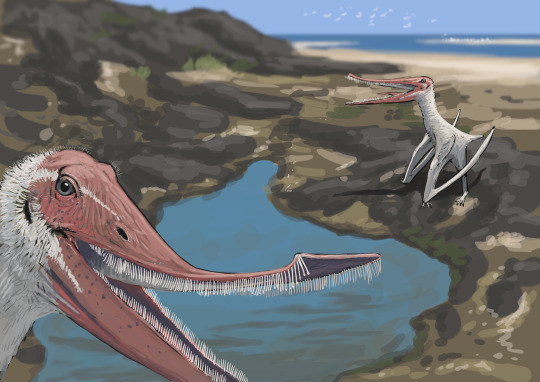
Thanks for the question!
I actually hope that never happens because that would mean we have found everything there is to find and that there is universal consensus on the number and validity of species.
In reality the number is constantly going up and new fossils, methods, analysis etc. give birth, not only, to new organisms from deep time but also change our view on deep time and what/how many creatures lived in it. There is quite a bit of subjective stuff going on here. The fossil record is too fragmentary for objective truth.
On top of that there are organisms we will never know about because they never fossilized in the first place, or because human and natural processes destroyed their remains.

But back to my first point: I really hope it doesn't come to this because that would be fricking boring. One of my biggest draws in paleo is the mystery of it all. There is SO MUCH that we don't know. And that's great, because there is a chance to speculate, research and learn something new every day.
I'm at the point in my life where i enjoy the process more than the scientific results or images we create based on them.

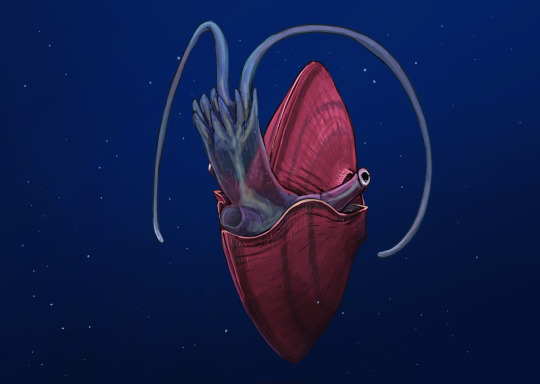

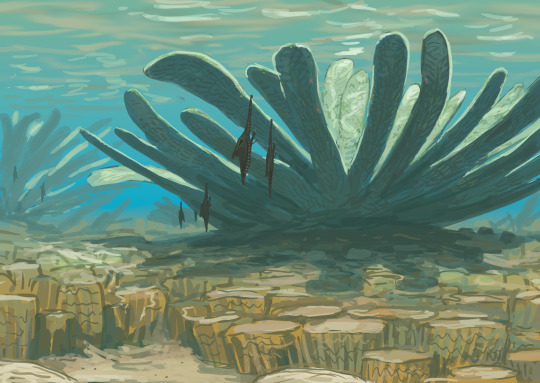
#sciart#paleoart#paleostream#cretaceous#palaeoblr#science#palentology#pterosaur#sketches#fossil record#fossils
202 notes
·
View notes
Text
Prehistoric Planet Croc Ideas
So this was a thing I did on Twitter in anticipation of Prehistoric Planet. Obviously crocs (in this case meaning crocodylomorphs) were a pretty massive part of earth's fauna during the late Cretaceous, and seeing as the first season featured NONE I came to speculate which taxa could hypothetically make an appearance.
Now part of the challenge for myself was to come up with a new, interesting contender every day in anticipation of the show's release, each based around the confirmed episides we had and restricted purely to taxa from the Campanian and Maastrichtian. While it took a lot of energy, I did manage to do so. Hell, halfway through they dropped the reveal of Simosuchus, which I had saved for later.
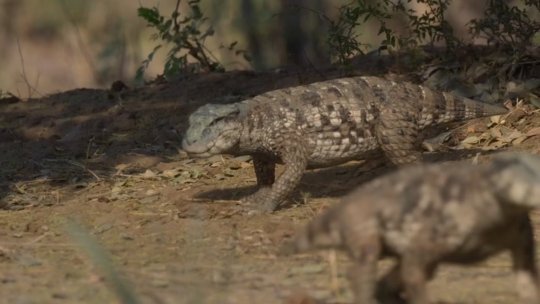
Obviously we didn't get much still, but I'll regardless post my list of candidates and ideas here, perhaps third time's the charme for a lot of these (tho for convenience I'm still ordering them by S2s episode titles). I'll also try to break them apart roughly by biome, starting with islands.
PS: I'd love to hear which crocs people would have loved to see themselves. Any on this list or stuff I didn't even mention? Let me know I'm curious.

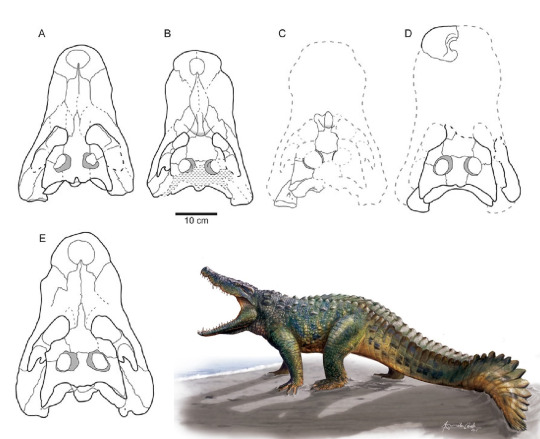

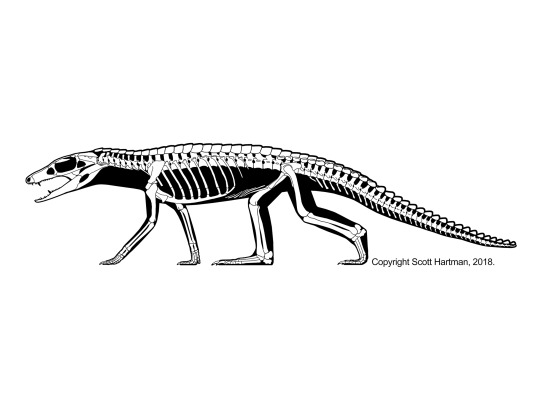

We got a shit ton of island crocs from the Cretaceous actually, which you can broadly divide into two categories.
The crocodiles of the European archipelago as seen in the top row.
Featuring the small, possibly shellfish eating Acynodon (art by Adramelech89), the incredibly widespread Allodaposuchus which did have some possibly semi-terrestrial forms (art by Alejandro Blanco, Aina and Agnès Amblás) and Aprosuchus, a tiny terrestrial critter from Hateg (art by @knuppitalism-with-ue). They already give a nice diversity between tiny durophages with blunt snouts, large, more traditional crocs and lanky land species.
The other island category concerns Madagascar, which had a lot of attention in season 2. Discounting Simosuchus, we got Araripesuchus tsangatsangana (art by Scott Hartman) and Mahajangasuchus (art by Mark Hallet). Both are really cool. The former is yet another smaller terrestrial species that may not actually be part of Araripesuchus, while the later is a massive, 4 meter relative of the famous Kaprosuchus that took to the water independently from all other crocs and has been nicknamed "Hippo croc" for its weird skull. Really I'd have loved to seen an episode entirely dedicated to this place.
Next up we had the badlands episode, which oh boy has a lot of contenders from the clade Notosuchia. Brace yourself.
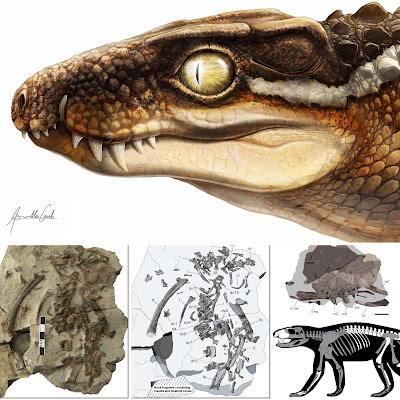


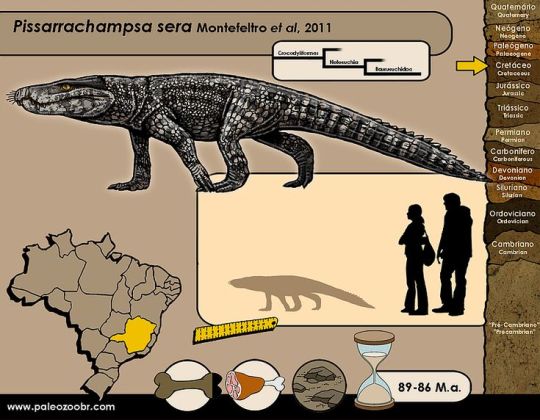


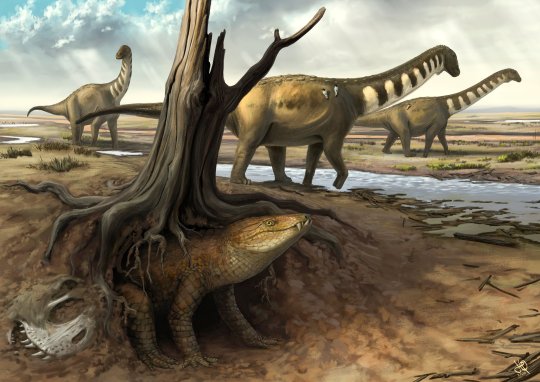

Here again I could split these in two categories.
The first is just general badland taxa. There's Ogresuchus for example, from Spain's Tremp Formation (art by Aina and Agnès Amblás). A relatively small sebecid found in a sauropod nesting site. And we all know what PhP does with baby sauropods. Or the long-necked Gobiosuchus (art by @yoofilos) from Mongolia, which may look like its related to the other ones in this category but actually is a far more ancient type of croc.
The far bigger group concerns South America's Notosuchians. ALL OF THESE are from the Bauru Group, with some even from the same single formation. You got Stratiotosuchus (again by Joschua Knüppe), a large terrestrial baurusuchid that filled the nische of mid sized carnivore in an environment shared by sauropods and abelisaurs. There's Pissarrachampsa (by Felipe Alves Elias), another baurusuchid I decided to feature because we have evidence of a nesting site that shows they only had few eggs. A great opportunity to show their tender side. Uberabasuchus (justin_an74), part of the bizzarly proportioned peirosaurids. Adamantinasuchus (by Deverson da Silva), a small, lanky Notosuchian and of course the heavily armored omnivore Armadillosuchus (by the ever talented Júlia d'Oliveira). Hell you could do a full episode just on the foodweb of the Bauru Group (Godoy et al. 2014).
Then there's swamps, which I'll just use to dump all the crocs that don't fit into the other categories.
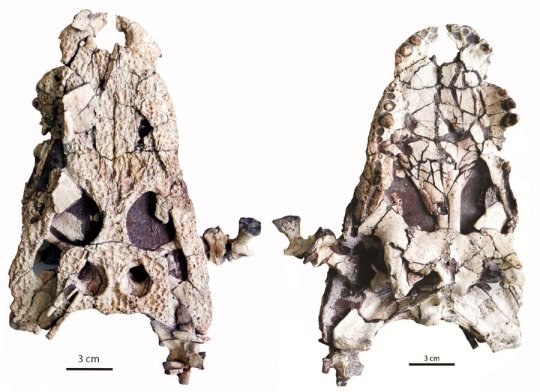


As you'd expect, freshwater would be ideal for crocs with a more traditional semi-aquatic lifestyle, here represented by three forms. Jiangxisuchus (image by Li et al. 2014) is a paralligatorid, which are tiny crocodilians from the Cretaceous and Paleogene of east Asia. We honestly don't know what they are, some say alligator relatives, others say they are closer to crocs. But its small and cute. Then there's Roxochampsa (artist of the model I couldn't find), which looks suspiciously crocodilian but is actually a relative of Uberabasuchus from the badlands, hell it appeared in the same formation. Still, I reasoned that I'd throw it into this category because I already proposed so much for badlands (none of which came true but hey). And then there's Denazinosuchus (art by Andrey Atuchin). Again it looks deceptively like a modern croc, but is actually the last remnant of the goniopholids, crocodyliforms that were prominent animals in the Jurassic and early Cretaceous. It could have brought both taxonomic diversity nad highlighted croc resilience till the end.
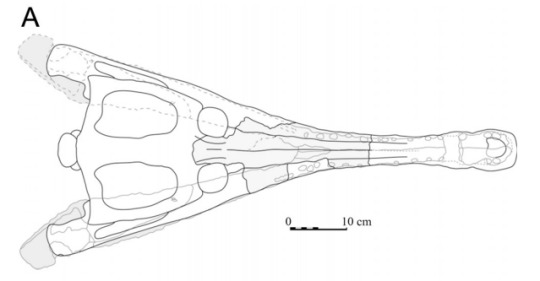

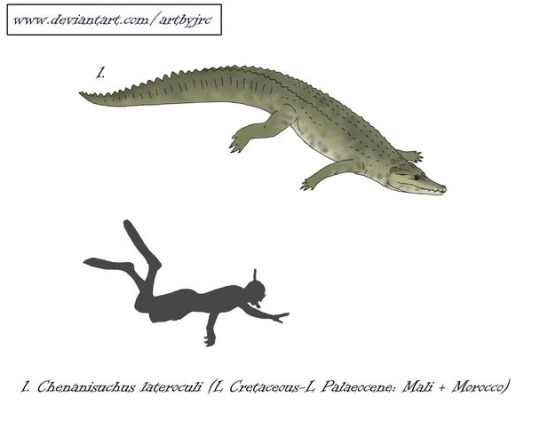
When it came to picking out crocs for Oceans, it got tricky. Obviously season 2 tried to differentiate itself by being set more in the open ocean, not the coast, and true pelagic crocodiles weren't around by the end of the Cretaceous. So I had to settle for coastal animals. There's Sabinosuchus (Schiller II et al. 2016), a cousin to Sarcosuchus and, like Denazinosuchus, one of the last of its lineage. Also its from Mexico which is rarely talked about for its fossils. Rhabdognathus (Ghedoghedo) is a distant cousin, a slender snouted dyrosaur. Unlike pholidosaurs, dyrosaurs actually did really well after the KPG impact and spread around a lot, living way into the Eocene. And finally Chenanisuchus (art by artbyjrc), which like Rhabdognathus was found both before and after the impact that killed the dinosaurs.

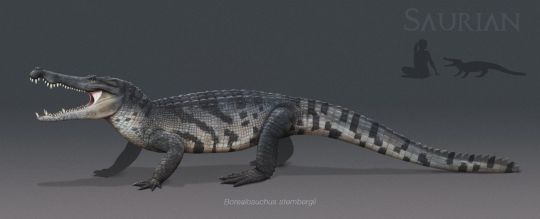
And the final two I shall talk about, both of which I thought/hoped would appear in the North America episode. Again, there's certainly overlap, both would have just as much fit into swamps, while many others would have also suited North America. Regardless, here's Brachychampsa (Tom Parker) and Borealosuchus (Chris Masna), both iconic animals from the Hell Creek Formation. One closely allied with alligators and caimans, the other more basal with a head-shape more similar to todays crocodiles.
Now obviously there'd have been a lot more. Part of the challenge to myself was to try and be as diverse as possible, rather than just listing 10 different baurusuchids I went with only two, tried to include as much of the world as possible, etc.... There's also the fact that some really awesome taxa, Titanochampsa, Brachiosuchus and Eurycephalosuchus, all incredibly unique or interesting, were published too late to have been considered for the show.
And now, in hinsight, we obviously know that with the exception of Simosuchus none of them made it in. Which is a shame, but maybe next time.
#prehistory#palaeblr#crocodile#paleontology#long post#prehistoric planet#prehistoric planet 2#borealosuchus#brachychampsa#simosuchus#pissarrachampsa#stratiotosuchus#gobiosuchus#ogresuchus#uberabasuchus#roxochampsa#armadillosuchus#adamantinasuchus#jiangxisuchus#denazinosuchus#sabinosuchus#rhabdognathus#chenanisuchus#mahajangasuchus#araripesuchus#acynodon#allodaposuchus#aprosuchus
157 notes
·
View notes
Note
I love the idea of Papa Pickle and his mate with a little one! What if the little cave child wanted to spar with the fighters and tries instigating fights with each of them?
Their reactions?
I know you requested headcanons of the fighters meeting the baby first, I figured it’d be a nice intro to this one. I recall writing something birth related, but upon further inspection it was mostly focused on the reader and not the baby (twins). This will be written for an infant as singularity, but the twin AU partisans can double that.
Baki Headcanons: Meeting Pickle & Prehistoric! Reader’s baby; sparring with the Prehistoric! Child
Featuring the fighters and their reaction to the newborn, as well as a time skip of the now grown Jurassic child showing interest in training.

You’d think Baki is the most excited given his attachment to the Jurassic mom and vice versa. And to his credit, he is dutifully standing there with a wide, nervous grin, ready to welcome the little creature. He’s the first one after the parents to be allowed to hold the infant, although he’s a trembling mess and requires a nurse encircling him with her arms, constantly reassuring him. “You can’t just drop a newborn, Baki. It doesn’t work like that. You’ve…you’ve carried heavier. I promise.”
Against everyone’s expectations, Katsumi is the one that seems to mesh right in with the news. He comes from a healthy, loving family and the event is nothing new nor surprising to him. He doesn’t need any advice and casually scoops the infant up with his arm, using his large hand as a head rest. Pickle is surprised by this confidence and cautiously approaches him, observing his technique and taking mental notes. Baki chuckles at the unanticipated sight.
Retsu is the next in line to be introduced. After listening to a short briefing on the proper and safe ways to hold a baby, he breathes in and solemnly receives the child. He allows it to rest against his broad chest and supports the back with both hands. A laugh escapes your mouth as you observe the extremely concentrated frown of the Kenpo master. He’s a little embarrassed and a blush spreads lightly to his ears. “O-one cannot be too cautious when handling such fragile beings. I do not see anything worth of amusement.”
Jack prefers to keep his distance and politely refuses the invitation to also hold the infant. He is grateful to be part of it, but he doesn’t trust himself around delicate things. Perhaps when the child grows sturdier he will approach it with more confidence. Until then he doesn’t mind watching passively. There are other ways to contribute.
The way I see it, growing up among modern humans kind of guarantees that the child will be able to speak proper language. And in the few years that have passed I’m hoping that reader and Pickle have also picked up some basic communication skills. So there might even be some rudimentary dialogue coming from the parents! I wonder how Pickle’s voice would sound like.
The kid’s favorite sparring partner is most likely Katsumi. Within his family Katsumi has always been the younger sibling, but in the Dojo he is the authority figure most people look up to. From the moment your child showed the intent to train, the Karate prodigy promptly responded with tips and playful fights. He’s been teaching for years and knows how to assess the capacities of his opponent without using too much force or harming them. Compared to the rest of the fighters he has the most experience in dealing with novices and amateurs and acts accordingly.
On the opposite end of martial arts teaching is Retsu. He doesn’t like to joke around and believes his Chinese Kenpo isn’t some playtime activity for children. He has no problem explaining certain techniques to your kid, but it will be done by the book. Retsu is a great help if you need a break for the day. Kid has too much energy? It will be jogged and worked until late evening just to learn a fancy kick. No other way around it. The youngster will be returned completely passed out from exhaustion, but with a proud, satisfied smile plastered on its face.
Baki enjoys the idea of having a younger sibling, although he can be clumsy when it comes to sparring. If he’s too enthusiastic he might overdo his hits and next thing he knows, the child is on the grass crying and wailing. He scrambles to tend to the superficial wounds and frantically attempts to silence the screams. He doesn’t want to explain the ordeal to a dangerously powerful mom. Outside these small accidents, Baki is also one of the most preferred opponents.
The child is initially very cautious around Jack, but it doesn’t take too long to warm up to the idea of sparring with him. Jack has a lot of patience and most of the time just acts as a punching bag. If the youngster wants to try out a new move or practice some technique he’s seen somewhere, Jack will gladly receive the little blows and offer advice or encouragements. Sometimes after training they will hang out together doing small things like feeding the koi at the Tokugawa estate. “You’ve been training an awful lot lately. Any reason in particular?” Jack questions the little human, curious about the change. “I wanna hurry up and be strong already. Like mom!” the child looks up, beaming. Jack laughs at the last statement. “You’ve picked one hell of a goal. Good luck with that!”
#baki#baki the grappler#baki headcanons#baki hanma#katsumi orochi#jack hanma#retsu kaioh#pickle baki#kaiou retsu#prehistoric reader
304 notes
·
View notes
Note
Unga bunga to neolithic is a long time, the majority history of our species, but due to being prehistory we know extremely little about what happened and not a lot changes (or am i wrong?) until agriculture happens?
What's it like studying that massive knowledge void?
Ooooh I get u now.
I think a lot of ppl have this misconception about prehistory, that not much has changed over so many years. In fact, lots of things changed, from our diet to our behavior, and we don't really need textual sources to figure it out!
We can see human eating habits thru the bones they left behind in garbage pits and piles, showing progression from large prey preference to smaller prey because ppl figured out how traps work and that it's easier to just wait for an animal to get caught rather than chase it. In other places ppl built massive hunting contraptions (google the Negev Kites) that force prey to fall into pits or off cliffs to kill it more efficiently. These preferences change and shift fluidly many many times in many different places!
People were doing art stuff way earlier than what we'd like to think, including music. Neanderthals made simple flutes that can be still played today! Natufians brewed beer and alcohol before agriculture was a thing!
The biggest change we see is in the tools. Flint tools get more and more advanced, from large clunky rocks to symmetrical, neat and carefully planned handaxes, knives, daggers, scrapers and even tiny burins that were used for many activities, including tattooing.
The most interesting part in prehistory is the void! You just know it's filled with so many things that are just waiting for you to notice and make sense of. There is tons of data collected in prehistoric excavations (unlike historic ones) and it's sitting there waiting for the creative researchers to look at it and figure things out!
#archaeology#this doesnt scratch the surface anon prehistory is so so so interesting#and the topic is insanely thicc with stuff
42 notes
·
View notes
Photo
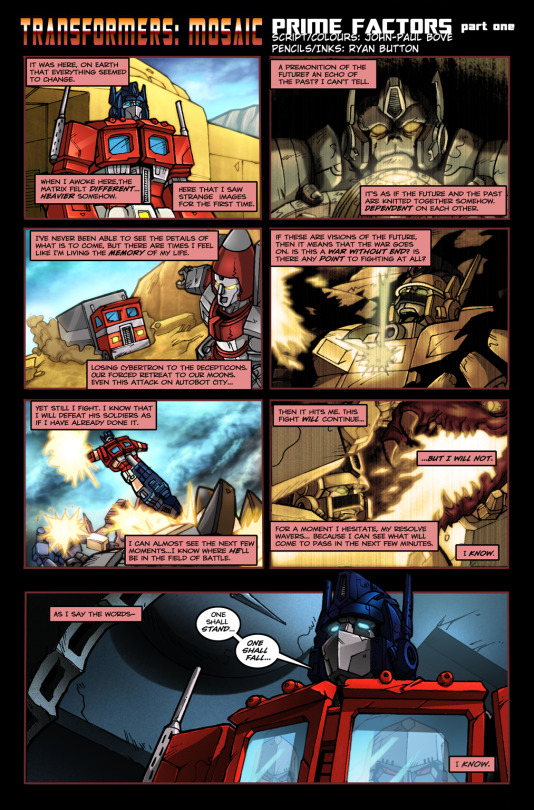
Transformers: Mosaic #580 - "Prime Factors - Part One"
Originally posted on February 14th, 2011
Story, Colours - John-Paul Bove
Art - Ryan Button
deviantART | Seibertron | TFW2005 | BotTalk
wada sez: This is the first of a mirrored pair of strips by Bove, serving to establish that when Optimus Primal took on Prime’s spark in Earth’s prehistoric past, there was some degree of interplay between their memories; Optimus Prime’s iconic ironic line from The Transformers: The Movie is thus made literal, as he knows the outcome of the battle is predetermined. On deviantART, Bove remarked: “I always thought it was a strange thing to say unless you KNEW that one of you wouldn't be coming back. After all, he's fought Megatron many times before and they both left standing at the end. Now we know why... ;)” Bove would explain the mechanics of this in detail on Seibertron: “Just to explain, the idea is that Prime has had these visions since waking up on Earth for the first time but that it is only now that he's able to start seeing the shape of what's coming rather than just a feeling, which is why he says "Then it hits me" at the point he does.” He further clarified that Prime was not remembering his own death firsthand, but rather has Primal’s knowledge of Cybertronian history: “Well Primal would know that Prime died, as BW characters come from a time at least 300 years after G1 and would certainly know the circumstances of it. It's more the idea that a fragment of Primal's knowledge stayed behind, in the same way that the accumulated wisdom and knowledge of previous leaders is supposed to stay within th [sic] Matrix. That may not have been enough for Prime to have crystal clear knowledge of the future but certainly would have enough to have premonitions and a sense of deja vu about the circumstances.” To one reader who pointed out that knowledge of Earth had been deliberately censored by the time of the Maximals and Predacons, Bove said: “I don't think that was the case but I'm happy to be corrected. The presence of the Matrix (and references to Unicron) implies the events of the Movie would be canon in BW continuity. Black Arachnia also mentions that Starscream was killed by Galvatron, so again the events of the Movie at least were known. BW Megatron does try to kill G1 Prime so that the Autobots never win the war that leads to the BW status quo. If the events on Earth had not mattered or the information lost then Prime would not have been important to the outcome of the war on Cybertron and not worth Megatron's efforts.” Bove’s grasp on Beast Wars continuity has always been, well, shaky. Again, I find myself baffled by the behind-the-scenes process of the Mosaic project, as Bove remarked that this story had been written “about 3-4 years ago” by the time of its publication! Clean colors below.
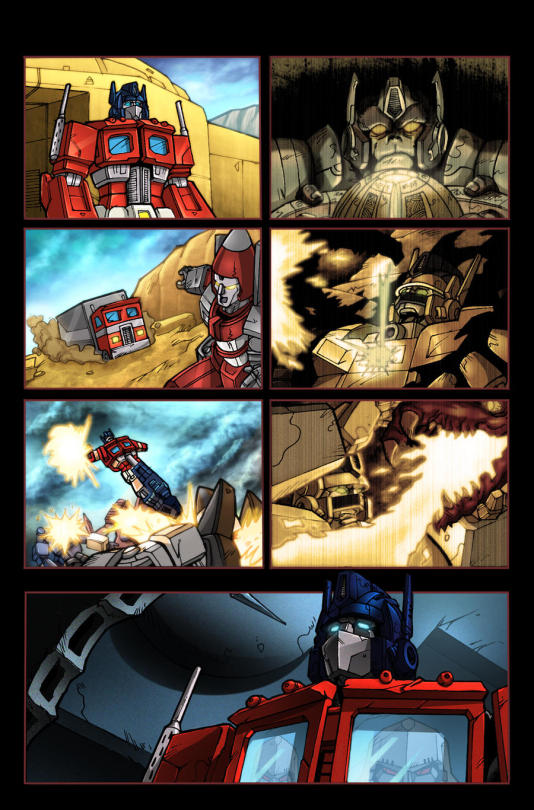
#Transformers#Transformers Mosaic#Maccadam#Sunbow Transformers#Beast Wars#The Transformers: The Movie#John-Paul Bove#Ryan Button#official creator#Optimus Prime#Optimus Primal#Thrust#Soundwave#Blitzwing#Ramjet#Megatron
32 notes
·
View notes
Text
When women weren’t oppressed
Recently I got a private message asking when there was a time in history when women weren't oppressed. So, when was it?*
*I’m not a historian and my knowledge of this subject is far from complete. I welcome additions, corrections and conversation. This is a subject where you will find contradicting interpretations and as far as I’m concerned, attempts to silence anyone who dares to suggest patriarchy isn’t inevitable. Vetting of information isn’t easy without a background in relevant sciences. This is not a comprehensive look into female-friendly cultures as I’m not an expert at all on this subject.
Men want us to believe patriarchy is inevitable
At lot of us take patriarchy for granted. It has always existed. The past was even more horrible to women than the present day, right? The cave-men grabbed women by the hair and dragged them to their caves to rape.
We tend to consider males aspiring towards dominance as inevitable and natural, an inherent part of the behavior of Homo sapiens males.
This view of the past benefits the patriarchy. If we believe women have it better now than ever before, we settle for what we have now. If we believe the patriarchy is the natural social order of Homo sapiens, we might be satisfied with small changes that give us some relative safety and don’t pursue true liberation.
Rape is not inevitable
Rape is one of the main ways men oppress women.
We take rape as inevitable. It’s not.
Among Mosuo people, where women are the heads of the households and inheritance is matrilinear, the concept of rape doesn’t exist. I’m by no means an expert on Mosuo culture, so feel free to correct me. As far as I know, they consider rape an absurd concept – or at least did in the past, as nowadays patriarchal mainstream Chinese culture has started to affect the life of younger generations.
Imagine a life where you can’t imagine rape more than you can imagine someone forcefully stuffing food in your throat, which would be a violent and completely absurd act. I believe countless of women have lived at places and times where rape wasn't a thing.
The past is re-written by men
In the 19th century it was surprisingly commonly believed humans had a matriarchal past, but at some point the idea was ridiculed to oblivion so that it was (is?) basically impossible to study that subject and be taken seriously in the academia.
Later, continuing to present day, signs of matriarchal societies tended to be ignored or explained away. In contrast, rule of men is often assumed in historical findings from very little proof.
This assumption hasn’t been always right. A sizeable amount of prehistoric graves, assumed to be of male rulers or hunters, have now been proved to belong to women. Just lately scientists have realized the whole assumption of only men being hunters in historical hunter-gatherer societies is false. Women hunted too, as much as men.
The problem with researching the past were women weren’t oppressed is that we have centuries worth of interpretations based on the biases of male scientists who saw their own patriarchal worldview reflected everywhere they looked. Their imaginations simply couldn’t (and can’t) stretch to understand anything else.
Minoan culture
Minoan culture is one example of misinterpreted ancient culture.
This Bronze Age civilization based on Crete revolved around women. For a long time, male scientist refused to understand what their discoveries meant. Meanwhile they were completely capable of interpreting similar art and other findings elsewhere as prove of male rulership. But when the findings pointed to female leaders, it was assumed to be symbolic.
An interesting detail from Minoan art is how men are depicted to be very athletic and always wearing very little clothing – a bit like women are today.
It took a long time before men admitted women held high positions in Minoan culture, when it was very obvious from the evidence, had they been able to admit it was possible. Men tend to interpret the evidence to support their idea of a man the provider, man the ruler. And even most women accept it as the truth.
The patriarchal household isn’t inevitable
We often take it for granted that the natural human family structure is a male-led nuclear family. In the recent past and still today in many parts of the world, women move to their husband’s household, therefore ending up lowest in the social hierarchy as they are surrounded with the man’s family. When everyone else is related to the husband, it’s clear they more often than not take his side.
This is hardly the only way to arrange a relationship between a man and a woman. For example, the Mosuo people have a thing called walk-in marriage. Households are organized around a matriarch and her offspring. Both sons and daughters stay with their mother. Men and women of course have relationships, but the men simply stay for the night with their loved ones and then return in the morning to contribute to their mother’s household. Traditionally men haven’t taken care of their own children, but the children of their sisters. This is a practice that’s common in female-centered cultures.
An another alternative is matrilocality, which I understand has been or is practiced within certain Native American people. In a matrilocal system, the husband moves to his wife’s household. I believe this in itself causes a very different dynamic than a woman moving to a man’s family – the whole family now looks after the wife. Would you abuse your wife if you lived in the same longhouse as her whole extended family?
Venus figurines & Kurgan theory
There are signs that at some point in the distant past, Eurasian culture was very woman-centered. Venus figurines, depicting old women, have been found all over Eurasia.
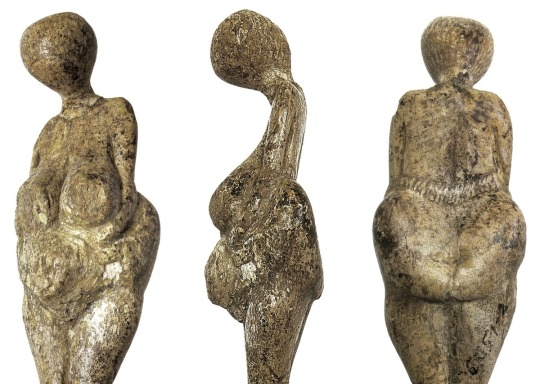

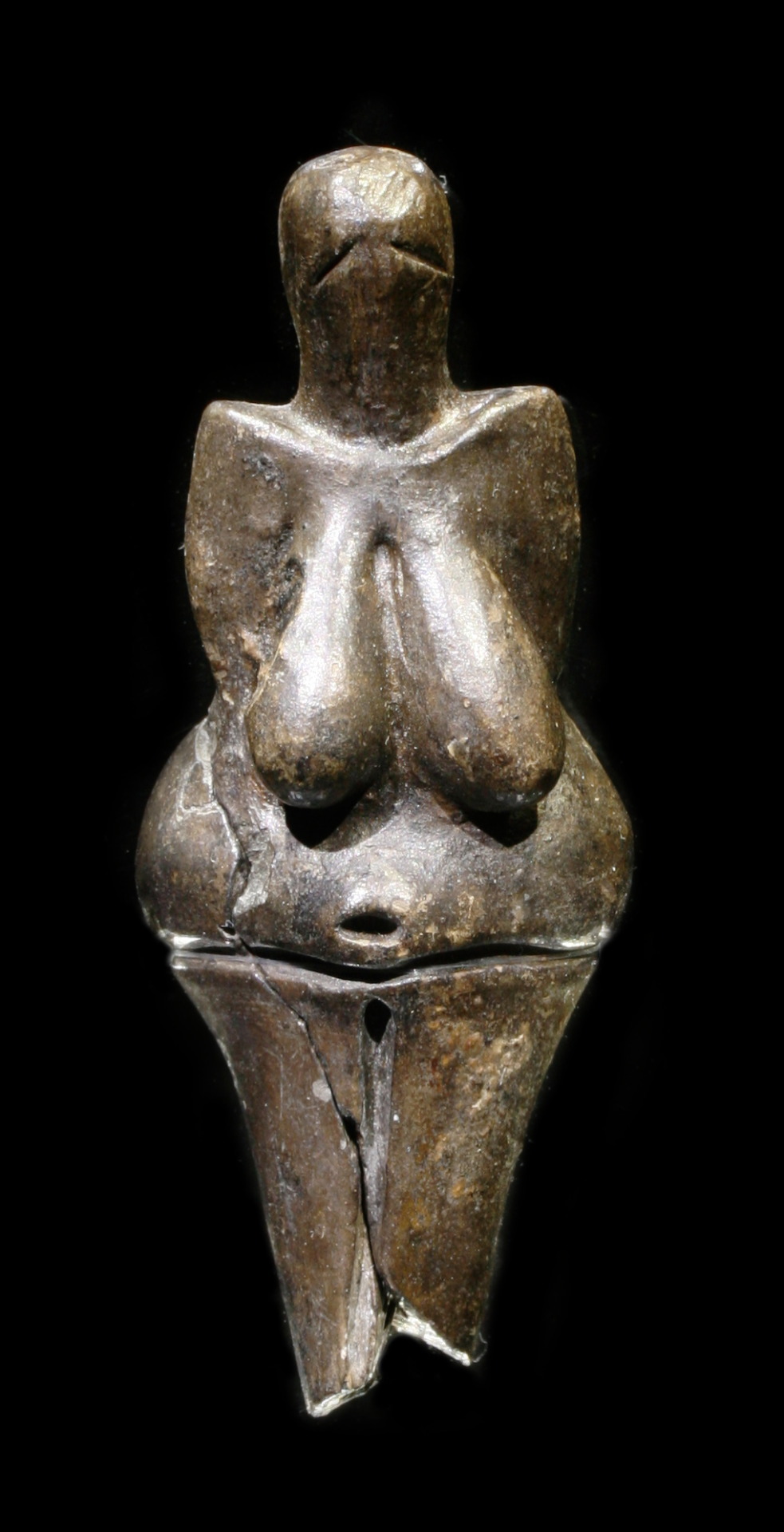
At some point the Venus figurines disappeared.
The archaeologist Marija Gimbutas (1921 -1994), whose work has been ridiculed and largely forgotten, proposed Kurgan theory to explain the prevalence of patriarchy in Eurasia. Kurgan culture originated at the Black Sea and they are assumed to be the first speakers of proto-Indo-European language.
It is assumed Kurgan culture was more violent and patriarchal and violently spread over other cultures that were female-friendly.
Terra Feminarum
A text written in year 1075 describes a Northern European area called Terra Feminarum, Women's Land. Terra Feminarum was described to be located east from the Swedes and west from Russia. It was told the residents were Amazons of the Baltic Sea. "When Emund, the king of the Swedes had sent his son Anud to enlarge his powers, he arrived by sea to Woman Land. The Women immediately mixed poison to spring water and this way killed the king and his army."
It seems likely Terra Feminarum was located in Finland and/or Estonia, where Indo-European languages were never adopted (re: Kurgan theory). Maybe this area was one of the last female-friendly cultures in Europe. This is pure speculation at this point. Our traditional cultures have been disrupted by Christianity and patriarchy.
It might have been Kaarina Kailo – a Finnish scholar in Women’s studies - who I think said something along the lines of her taking some liberties when interpreting our past. That sometimes her interpretations might be speculative to a degree. You know why? That’s what men have been doing the whole time. They take the proof of men’s societal power as granted, even when the evidence is scarce. If the scarce lines written of Terra Feminarum described rule of men, no one would doubt it was true. But now Terra Feminarum is a myth, not history.
--------------------------------------------------------------------
This was only the tiniest scratch to the subject and I hope others have more to add. I don't have time to write a more comprehensive piece.
It's often said patriarchy originated with agriculture and the concept of ownership. Whether that's true or not, patriarchy hasn't been here forever.
139 notes
·
View notes